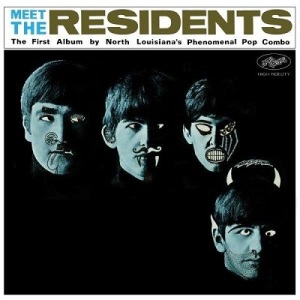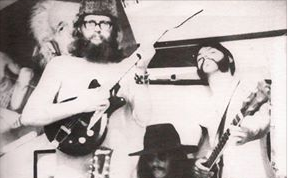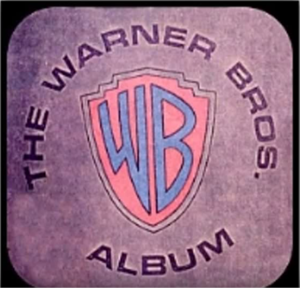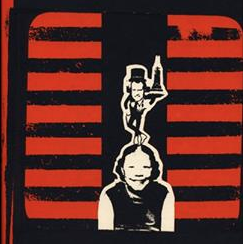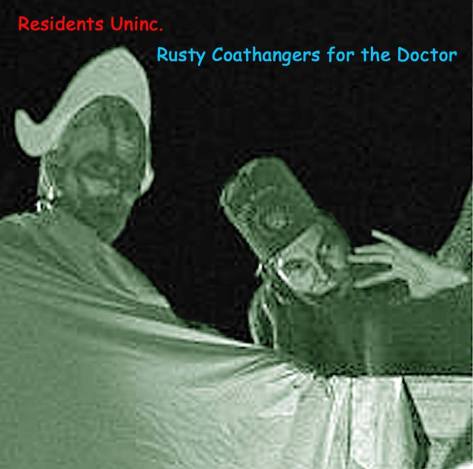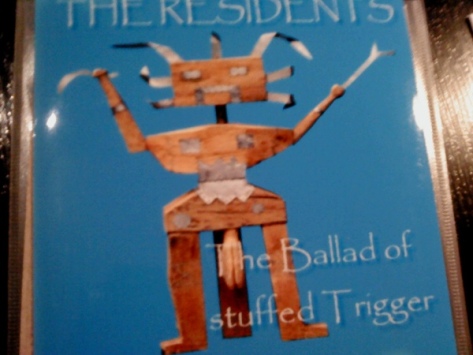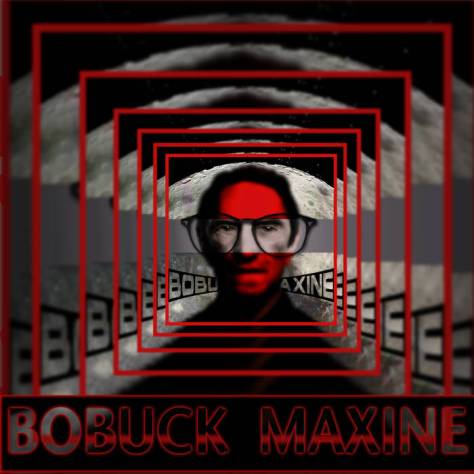
Charles Bobuck, an alias of one of the members of the anonymous avant-garde music innovators, The Residents, was known for releasing solo albums during this decade. As his stage name indicates, this Resident took cues from the Name Game.
Yesterday, I decided to go to Bandcamp and listen to some of Mr. Bobuck’s solo work, and I ended up listening to his solo album Maxine, which was released in October 2014. Maxine is not an actual album, but it consists of one 33-minute suite that was the walk-in music for the Residents’s Demons Dance Alone Tour from 2002.
I can say that Mr. Bobuck is a pure Resident at heart. When I went to his “Codgers” blog on the official Residents website, he gave out the history behind the track “Moonman”, which was recorded on the day of the American moon landing in July 1969, before the Residents even had a name for themselves. Charles said he was recording a song about lasers when another soon-to-be Resident wrote a short poem and presented it to him. This was recorded on tape using cheap instruments, primarily an acoustic guitar and a sloppy electric bass, and became the track “Moonman”. Note that this track was uploaded on the Codgers blog, as well as being released on the limited-edition Residents rarities album Delta Nudes’ Greatest Hiss. Nowadays, he even likes to work on solo electronic projects using software synth programs for his iPad.
Let me describe the whole suite:
Part 1 (0:00-4:45)
This starts out with electronically-distorted voice samples, mostly sounding like a broken TV broadcast from the future. A simple piano melody develops with echoed ambient noise effects. A hip-hop drumbeat plays along to the piano, backed by some old jazz instruments. The jazz melody comes to mind of Dixieland jazz music. A distorted noise effect comes, leading to distorted, very nasally group vocals, backed by a woman singing. This woman’s voice sounds as nasally as the group vocals. As the woman continues to sing, a reprise of the piano-and-drum melody begins, with the ambient sound effects. A really campy electric organ solo pops up, sounding like old recordings from the 1920’s, with a really futuristic synth bass almost drowning out the other instruments as it slowly increases in volume.
Part 2 (4:46-8:22)
As the futuristic synth bass riff continues playing, other electronic sounds flutter all over, with a drum machine rhythm playing along. Strange machinery noises also show up, only to stop right when a drum machine is jamming along to some other synth effects and mechanical sounds playing in melody. A progressive rock-style synth melody opens up to some strange clanging and machinery.
Part 3 (8:23-10:22)
This begins with a really baroque string arrangement, accompanied by some clanging bells and weird sound effects. Another string arrangement comes, first with some electronic noises but then later accompanied by Southern folk instrumentation, primarily a banjo being played like an acoustic guitar. A string synth and drumbeat turns this into a lighthearted pop tune, with some high-pitched arena rock guitar soloing.
Part 4 (10:23-13:21)
This starts off with a modern-sounding trance tune performed with a synth bass and a drum machine. Later, there are some phasing electronic effects, which eventually becomes a reversed keyboard melody with droning ambient synth effects. A trance tune similar from earlier starts, but sounds like the Crystal Method’s theme song to the TV series Bones, albeit with a much faster tempo. Some acoustic guitar chords turns the trance tune into something more experimental with reversed sounds, which is later accompanied by wordless female vocals. This part closes out with some heavily-reverbed acoustic strings playing along to some shaking percussion.
Part 5 (13:22-14:16)
A really weird, speed-freak tune with barroom piano, saxophone and tuneless yodeling, with weird electronic noises appearing soon after.
Part 6 (14:17-15:52)
An industrial-sounding bongo rhythm emerges, accompanied by a really folky violin. A drum machine accompanies the bongo and violin, along with futuristic noises. The violin becomes slightly more dramatic.
Part 7 (15:54-17:48)
This consists of a reversed piano loop. At one point, you hear a dramatic choir sample, but it was really brief. As the piano loop continues, various electronic effects emerge, later followed by some classical violin. The same weird electronic noise effect from part 5 engulfs the track, accompanied by a long synthesizer drone that sounds identical to a clarinet, albeit with a phasing effect.
Part 8 (17:49-20:48)
A stereo-panned tympani rhythm treated with reverb becomes a surf rock electric guitar riff backed by synthesizer effects and a dramatic string synth. A weird buzzing noise shows up after a minute or so. Another guitar emerges, playing a distorted solo, which eventually becomes a distorted violin. A drum-and-bass drum machine rhythm comes later.
Part 9 (20:49-22:16)
Some weird reverbed noises starts out this segment, with some Jimi Hendrix-style guitar soloing that comes to mind of his performance of “The Star-Spangled Banner”. This guitar solo is also treated with reverb, and it is accompanied by some high-pitched whistling and a slowed-down voice sample.
Part 10 (22:17-24:24)
A Mister Rogers’ Neighborhood-esque piano boogie strikes up the track, accompanied by the same whistle from earlier and some reversed noises. The use of a saxophone makes this tune even more jazzy, also with a drum machine and watery synth effects. A distorted spoken voice closes out this segment.
Part 11 (24:25-25:41)
This starts out with a very short rock jam, but eventually a synthesized creaking noise engulfs it. Later, it becomes a much more bluesy tune with harmonica, futuristic noises, piano, and percussion. At one point, you hear something that sounds like a robot from Star Wars talking in reverse!
Part 12 (25:42-29:39)
A reverbed noise effect and tympani note introduces a jazzy tune performed with piano, with a rapid drum machine rhythm and industrial music-style synth sounds. As the drum machine rhythm continues, some long bleeps and drones starts to sound like a saxophone solo. After that comes some atmospheric synth washes, along with some synth bass and mechanical sounds to close out this segment.
Pat 13 (29:40-30:44)
This starts off with a classical melody performed with reverbed brass instruments, with one of them beginning to take up a more jazzy sound. A strange, continuous guitar surge opens up to a poppy acoustic guitar riff.
Part 14 (30:45-32:05)
As the guitar surge closes out, a deep vocalization leads into a folky electronic tune that is very brief, because it eventually becomes an industrial-sounding dance melody. There’s also a really funky guitar riff and a kitschy guitar solo thrown in there, too.
Part 15 (32:06-33:30)
This closing segment consists of a really old-school jazz melody with piano and drums that is accompanied by some crooning vocals, with some backing vocals that were sped-up and sounding like Alvin & the Chipmunks. What’s weird is that this segment cuts off abruptly right in the middle of the song, ending with about 5 seconds of silence.
This sounded interesting the first time I listened to it, but sounded 10 times better the second time!
This is by far Charles Bobuck’s best solo recording I had ever listened to. If you’re a die-hard Residents fan, then by all means, listen to it! You can easily download a copy or buy it on CD. The Bandcamp link is right here: https://bobuck.bandcamp.com/album/maxine
